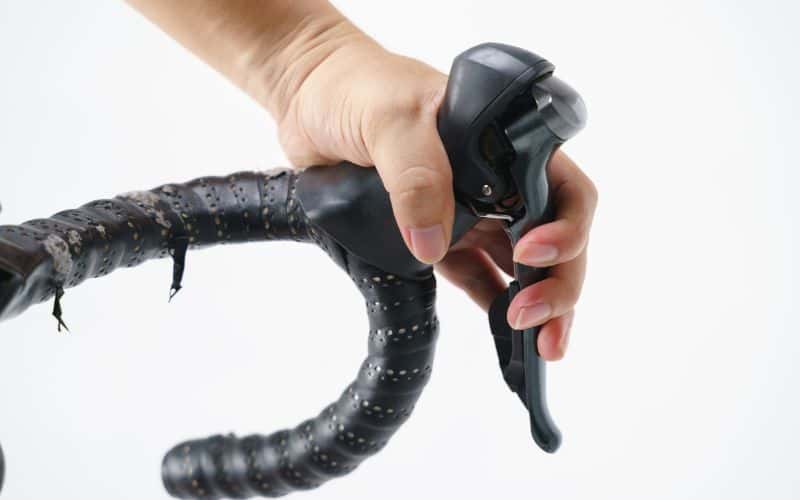Are you ready to take your road biking experience to the next level? Take your bike riding up a notch by learning how to change gears smoothly. Mastering this skill not only improves your overall cycling performance but also keeps you safe and comfortable during your ride.
In this article, we will guide you through the essential aspects of how to change gears on a road bike. We’ll familiarize you with the various components involved in the process. We’ll also explain how to select the right gear for different situations.
With these tips in hand, you’ll be well on your way to a more efficient and enjoyable cycling experience.
In A Rush? TLDR Version
To change gears on a road bike, use the left shifter to adjust the front chainring and the right shifter to adjust the rear cassette. Shift to lower gears for uphill rides and higher gears for flat or descending terrains. Pedal lightly while shifting and avoid backpedaling.
Avoid cross-chaining, skipping gears, and incomplete shifts. Practice shifting smoothly and avoid forcing the levers.

Understanding Gear Systems On A Road Bike
In simple terms, a road bike groupset is a collection of components that allows you to move and stop a bike. The following components form a part of the groupset, i.e. the gearing system of a bike.
Derailleurs
Derailleurs are crucial in your bike’s gear system. They shift the chain between different cogs and chainrings. This allows you to change gears as needed during your ride.
Cassettes
A cassette is a set of sprockets located on the rear wheel. As you change gears, the rear derailleur moves the chain up or down the cassette.
Chainrings
Chainrings are attached to your bike’s crankset. The left-hand lever moves the chain between chainrings. This influences the gear ratio and pedal resistance.
It’s a good idea to keep these bike components well-maintained.

The Concept Of High And Low Gears
So what does that all mean in terms of riding?
In high gear, you find it harder to pedal. This is ideal when descending or riding at high speed on flat terrains.
Low gear makes it easier to pedal. Perfect for climbing or maintaining a low speed on uphill terrains.
How To Shift Gears On Your Road Bike
Shifting the Front Gear
The left shifter controls the front gears (or chainring). Shifting into a larger chainring will make pedaling harder but faster – ideal for downhill or flat terrains.
Shifting the Rear Gear
The right shifter controls the rear gears (or cassette). Shifting into a larger cog will make pedaling easier but slower – perfect for uphill rides.
Tips for Smooth Gear Shifting
Two key things you need to remember about shifting gears.
Firstly, remember to pedal lightly while shifting gears. This ensures smooth gear changes and avoids damaging your bike. Secondly, avoid backpedaling during the gear-changing process.
When Should You Change Gears On A Road Bike
The ideal cadence for efficient cycling helps you move faster with less energy. Gears play a big role in maintaining this cadence.
Factors that influence gear changing include road gradient, wind, rider fatigue, and traffic situation.
Shifting Gears Based On Riding Conditions
- Shifting gears when climbing: Shift to lower gear for uphill rides. It allows you to maintain a smooth cadence without overexerting yourself.
- Shifting gears on flat terrains: Shift to higher gears for flat or descending terrains. This provides more speed with less pedal effort.
- Anticipating gear shifts based on the road or trail ahead: Keep an eye on what’s coming up! Make gear changes in advance to maintain your optimal cadence and conserve energy.
Check out this video from Trek for a visual explanation:
Common Gear-Changing Mistakes To Avoid
Cross-Chaining
Cross-chaining occurs when you’re in the biggest chainring and biggest sprocket or smallest chainring and smallest sprocket. This strains the chain and derailleurs.
Make sure you keep your chain aligned. Shift to a smaller chainring and larger sprocket or vice versa.
Skipping Gears
Skipping gears can lead to an uncomfortable ride. You might shift too many gears at once.
Practice shifting smoothly. Shift one gear at a time for optimal cadence and control.
Incomplete Shifts
Incomplete shifts occur when the derailleur doesn’t fully engage a new gear. It leads to chain noises and less efficient pedaling.
To avoid this issue, apply slight pressure to the shifter and listen for the gears to engage fully.
These issues can also start to wear down your gearing components and lead to your bike chain slipping as well.

Frequently Asked Questions
I’m A Beginner, How Can I Practice Shifting Gears?
Practicing gear shifts can be done with someone else pedaling the bike on a portable bike trainer while you maneuver the levers.
Also, shifting while pedaling helps you to feel how the pedal effort changes. You can hold the rear brake while shifting to practice this technique.
How Can I Know What Gear I Am In While Riding?
Depending on the budget of your road bike, it most likely won’t have a built-in gear indicator. Experienced riders typically determine their gear based on the feel of their pedaling effort and the position of the chain on the front and rear cogs.
With experience, you will learn to sense which gear is most appropriate for different riding conditions.
Do You Stop Pedalling When Changing Gears?
No, you should not stop pedaling when changing gears.
On the contrary, you need to pedal when changing gears on a road bike. The chain needs to be in motion for the derailleur to shift from one gear to another. If you try to shift while coasting, you may damage your bike.
However, you should take it easy on the pedaling pressure when you shift to allow the chain to smoothly transition to the next gear.
Lastly, always be gentle with the shifters. Too much force can cause them to break.

